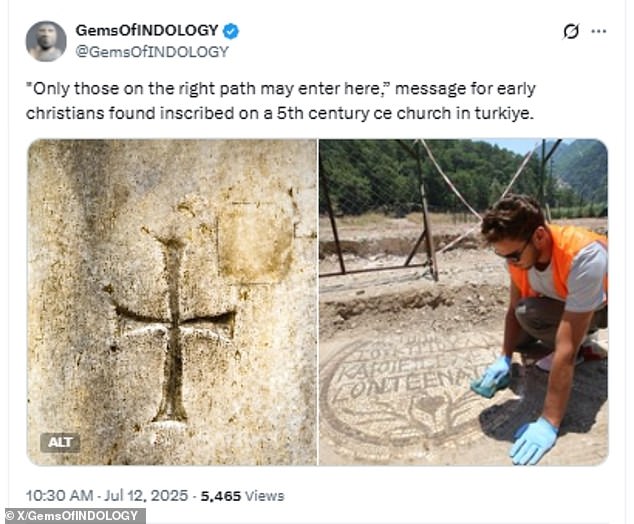
Ancient Christian Church Entrance Unveils Ominous Chilling Warning to All Who Enter
Ancient Mosaic Warning Unearthed at 5th-Century Church in Turkey
[Image 1: A stunning mosaic inscription reading, "Only those on the right path may enter here," laid at the church entrance.]
Caption: The mosaic, found at the entrance of Church No. 1, served as a moral guide for visitors.
Archaeologists excavating the ancient city of Olympos in Turkey’s Antalya province have uncovered a striking mosaic message at the entrance of a fifth-century church. The inscription, reading “Only those on the right path may enter here,” was designed to deter non-Christians and guide the behavior of visitors. Found in Church No. 1, the mosaic’s circular design features colored tiles and underscores the sacred nature of the space.
A City Rich in History
The discovery was made during ongoing excavations led by Dr. Gokcen Kutulus Oztaskin of Pamukkale University. Since 2006, teams have uncovered multiple structures in Olympos, a key Lycian city later absorbed into the Roman and Byzantine Empires. The site has revealed intricate mosaics with geometric and botanical patterns, as well as benefactors’ names, highlighting its significance as a Christian hub.
[Image 2: Archaeologists excavating Church No. 1 in Olympos.]
Caption: Excavations at Church No. 1 have revealed layers of history spanning centuries.
From Necropolis to Neighborhood
Near the church, researchers found a fifth-century residential home built atop a Roman-era necropolis. Repurposed during Byzantine population growth, the house retained its original layout even after a sixth-century fire. Its stone-paved floors and multi-room structure offer insights into daily life during Olympos’ transformation from a pagan city to a Christian center.
A Treasure Trove of Mosaics
“Olympos continues to surprise us with its rich mosaic heritage,” said Öztaşkın. Recent discoveries include mosaics in Churches No. 1 and 3, the Episcopal Palace, and a bridge. The team also uncovered the mausoleum of Lycian ruler Marcus Aurelius Arkhepolis and the Antimachos Sarcophagus.
[Image 3: Aerial view of Olympos’ ruins, including churches and ancient tombs.]
Caption: The city’s harbor tombs and temples reflect its layered history.
Future Explorations
Work continues on major monuments, including a potential temple identified by bossaged stone walls. “We’ve preserved the site’s structure and will soon excavate this religious building,” Öztaşkın noted. The northern sector is expected to be fully explored within two years, after which focus will shift south.
Historical Context
Christianity took root in Turkey in the first century AD, and Olympos became a vital Byzantine Christian center. Fifth-century churches and homes built over older structures mirror the city’s shift from classical pagan traditions to a Christian identity.
[Image 4: Artifacts from Olympos displayed at Antalya Archaeological Museum.]
Caption: Discoveries from the site, including a large storage jar, are now showcased locally.
As excavations persist, Olympos reveals new secrets, cementing its status as a window into ancient spirituality and urban life. With every mosaic and structure uncovered, the city’s legacy as a crossroads of cultures grows ever clearer.


